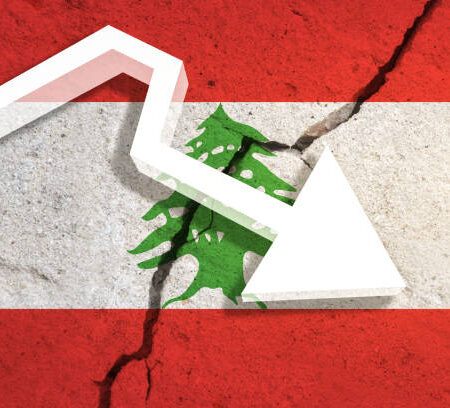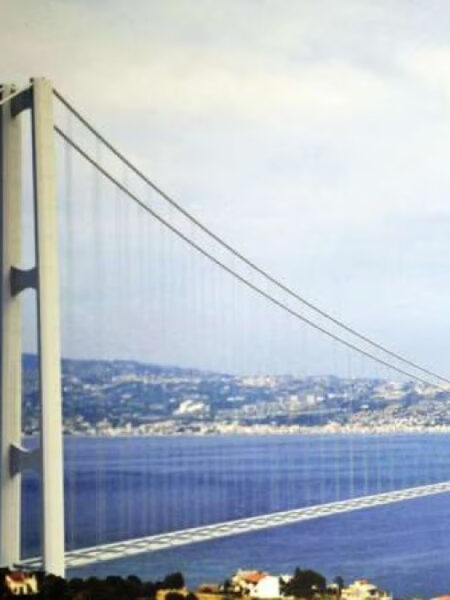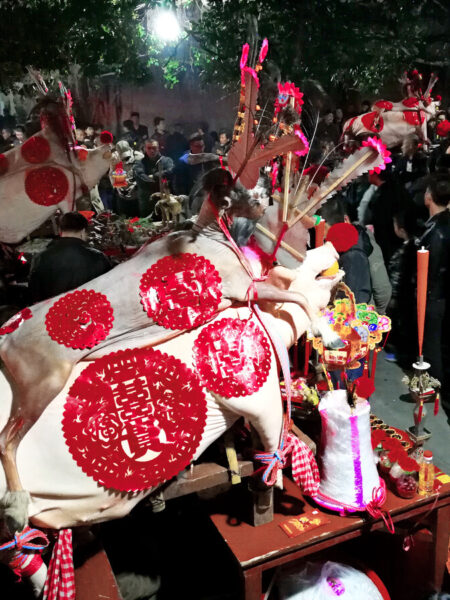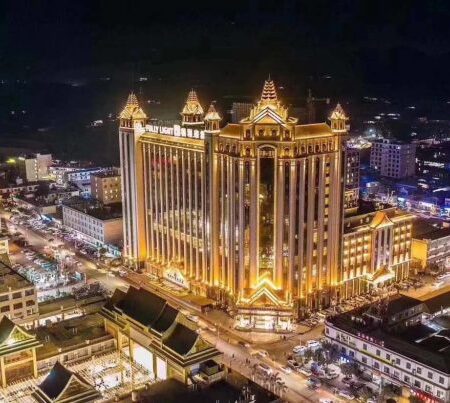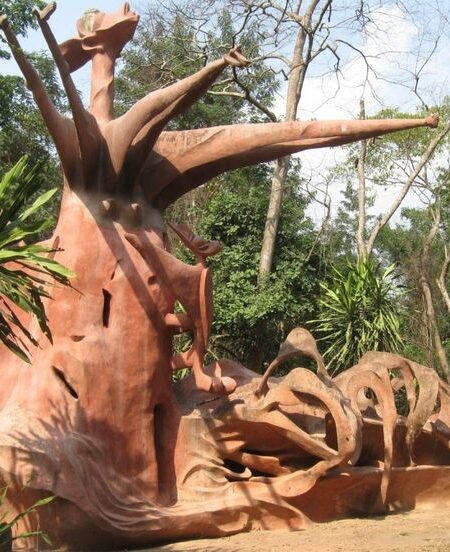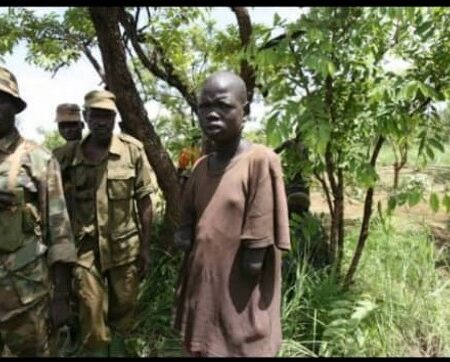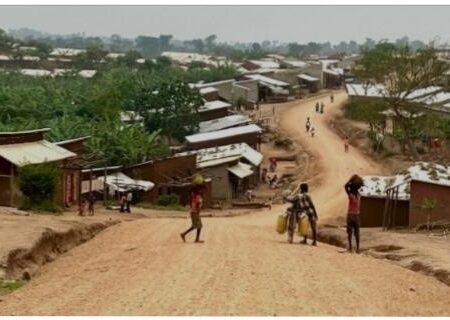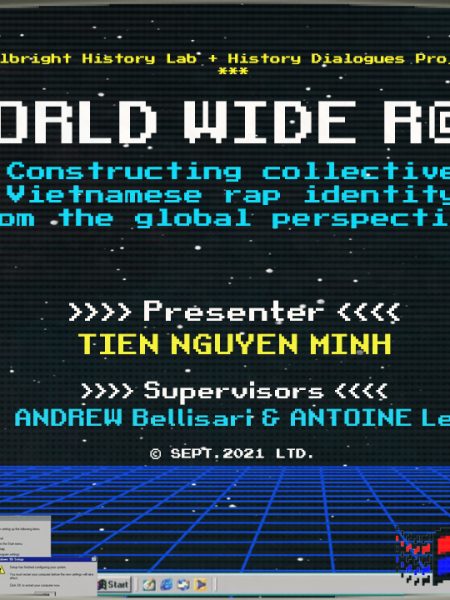Introduction
Protests are often regarded as physical or online activities that involve mass demonstrations in particular physical or virtual spaces. Recently, most people have seen connections between the media and agitations. But the question that begs answer is: how has the increased use of social media impacted on protest activities around the world? The internet is not only an information reservoir, but an avenue to air opinions, views, and agitations from anywhere in the world. The impact of social media on protest and government policies requires further study.
Background
Protests are occasions when people shout, chant and carry signs to show their complaint, disagreement or opposition to something. Protest is a form of political participation. Elections, which are the most common form, are very ritualistic and periodized, and citizens often have no choice than to follow its rituals and periodization before they can achieve political or social changes. With protest however, an opportunity is made available for citizens of a country to demonstrate their need for political change or ventilate their anger on certain political issues.
My research draws on the definition of protests used by Olukayode Eesuola: “…all forms of protest activities or actions that are displayed in the public space, [and] are usually to attract the attention of the authorities to which such protests are directed” (Eesuola 2015, 29).
Agitations, demonstrations, protests and confrontations have always been held in the Nigeria socio-political space. Prior to independence in 1960, colonial and pre-colonial Nigeria witnessed such activities either to ask for a change or to oppose the status quo.
Precolonial Nigeria, during the days of empires and kingdoms, witnessed uprisings or “protests”. For instance, the old Oyo empire under the Alaafin of Oyo, which controlled vast regions of today’s Southwestern Nigeria, was a powerful monarchy. However, the system of government rested on the ‘Ogboni’ to avoid excesses by the Alaafin. The ‘Ogboni’ was the third organ of government of the Oyo empire; in the Yoruba political system, it played the judicial role and was made up of prominent diviners.[1] The ‘Ogboni’ played this role to the extent that when an Alaafin flouted the separation of power in the palace, he was sent a calabash, essentially an order to commit suicide.[2]
By the 20th century, protests and demonstrations took another dimension: mostly the masses who were disgruntled over certain government policies manifested as demonstrations in the streets, marketplaces, or even government houses or institution buildings.[3] This approach was more active, and involved the use of flyers, placards, and different dress attire to show their disgruntlement. Examples include the women of the Eastern colonial Nigeria’s protest against the high tax levy imposed by the then colonial administration (1925-1930) (known as the “Aba women’s riot”). In the same vein, on November 29, 1947, a protest was led by Madame Funmilayo Ransome-Kuti to demand the abolition of the tax on women in Abeokuta, amongst other welfare issues. The protest led to the abolishing of such tax law and even Alake of Egbaland abdicated the throne on January 3, 1949. This has been tagged as the ‘Egba Women’s revolt’; it motivated others to demand more and inspired other protests that followed at this period.
Post-independence Nigeria has witnessed and is still witnessing protests and demonstrations by citizens, labour unions, workers, secessionists, and opposition parties. Such activities ask for better welfare, or a change of policies or action against an oppressive regime or government institutions. These include the “SAP Riots” of 1989 and the “Ali Must Go” crisis that rocked the country in 1978.[4] During the “June 12” protests against the military regime of General Sanni Abacha, scores of people were killed, including students.
In the twenty-first century, social media has changed the face of Nigerian protest. My research draws its definition of social media from the Nigerian Communication Commission (NCC): “Broadly, social media connotes a web-based enabled application platform that enables users to create or share contents interactively and responsively too…The common denominator is characterised by the fact that the conversations or contents are essentially user created and managed” (NCC 2019,1).
Global Context
As demonstrated above, protests are not new in Nigerian or world history. Yet the year 2020 witnessed huge protests despite the pandemic and restrictions that came with the public health challenge, a viral threat that led to a repressive environment. The pandemic in fact created new protests as it triggered public health measures that were repressive; such measures drew political contestation, whether anger over lockdowns, government mismanagement of the public health crisis and funds, economic displacements, job loss, etc. People were cooped up, angry at government interference into their lives, stressed about health and economic factors, and in general, sitting at home on social media and news sites. In this way, the rise in protests was exacerbated by the pandemic.
The protest surge that marked the second half of 2019 continued, and in early 2020, there was little knowledge about the virus and it was seen as a localized problem. Mass demonstrations occurred in diverse places like Chile, Lebanon, and Hong Kong. In Iran, shorter protests occurred frequently, for instance, after the downing of a commercial airliner by Iranian armed forces. By February 2020, the spread of the coronavirus reduced the number and size of protests globally. However, a few weeks after lockdowns, protests began to reemerge. Data from Carnegie’s Global Protests Tracker show that already in April, the number of new anti-government protests rose to a high level.

Many of these protests centered around the core issues that have driven the global protests wave in recent times, such familiar grievances as corruption, police brutality, electoral manipulation, and social welfarism. Corruption remained a powerful phenomenon and mobilizer in both democratic and authoritarian countries. In Venezuela, systemic and state-driven corruption under President Nicolás Maduro sparked demonstrations. Corrupt practices in Bulgaria sparked months of protest against Prime Minister Boyko Borisov. Another protest theme of 2020 was citizens’ anger over police brutality. These include the ‘Black Lives Matter’ protests in the United States following the killing of George Floyd, the EndSARs protests in Nigeria and the protests in France over a police security bill.
Despite the fact that Nigeria is now a de-facto democracy with an elected President, the country still suffers from the underlying corruption that plagued it during the early post-independence years. SARS is merely one side of pervasive public-sector corruption in Nigeria. The #Endsars protests originated first in 2017. Nigerian activists, youth, and celebrities took to the streets in a peaceful demonstration across the country to raise awareness about SARS’ brutality and extortion and urge that it be disbanded. The #EndSARS hashtag was used to organize the protests on social media. The EndSars protests introduced new hashtags such as #EndPoliceBrutality, #NassSalaryCut, #EndSWAT, #EndBadGovernanceInNigeriaNow and many more.
What is SARS?
“The Special Anti-Robbery Squad” (SARS) was a Nigerian police force unit that was part of the State Criminal Investigation and Intelligence Department (SCIID). It was established in 1992 as one of 14 divisions of the Force Criminal Investigation and Intelligence Department, which was created to detain, investigate, and prosecute people who were involved in crimes such as armed robbery, kidnapping, and other violent crimes”. The squad was formed as a masked police force to carry out undercover operations against violent crimes such as armed robbery, car snatching, kidnapping, livestock rustling, and illegal gun possession and use. The period was marked by incessant robbery in cities like Lagos. The unit was established under the then Superintendent of Police, Simeon Danladi Midenda. By 1998, after the death of the military dictator General Sanni Abacha, SARS grew in power. The early success in the years of formation might have contributed to this extensive power.
“…[The] secret behind the successes of the original SARS was its facelessness and its mode of operation,” Midenda told the Vanguard, a Lagos based newspaper, in 2017.[5]
SARS’s extortion and detention of civilians, and torturing them into confession, soon became rampant. Such an instance was the killing of two university students, Bola Afilaka and Ayodele Adejuyibe. A report in June 2020 by Amnesty International documented at least 82 cases of torture, ill-treatment and extra-judicial execution by SARS between January 2017 and May 2020.[6]
EndSARS protests and the influence of social media
Segun Awosanya, also known as Segalink, a human rights activist, initiated the EndSARS campaign on Twitter in 2016, in protest against police brutality. The #EndSARS movement garnered momentum online and led to the President Buhari-led administration and the police authority to announce reform of the police unit, although nothing was done at the time. In 2017, a petition demanding the total disbandment of SARS was filed to Nigeria’s National Assembly by 10,195 people. The call was backed by a few senators. In 2018, rapper Michael Ugochukwu Stephens, better known by his stage name Ruggedman, joined the fight against police brutality by releasing the tune “Is Police Your Friend?” Due to a decrease in the number of cases of brutality, reorganizing the force rather than disbanding it was considered. The #EndSARS movement led to the Buhari administration ordering an overhaul of SARS in 2018.[7]
By 2020 the atrocities of the SARS officers had reached their peak, as had public dissatisfaction. Due to the use of digital technologies, the 2020 EndSARS protest spread like wildfire. The “soro soke” generation of Nigerian youngsters initiated the protest on Twitter before taking it to the streets. The Yoruba phrase “Soro soke” means “speak loudly.” It was promoted on social media and in person to encourage people to speak up in support of the cause. Olamide Oyewo, a protester, speaking to me in an interview, confirmed,
“Social media had a massive impact on the Endsars protest as it helped to spread awareness of the protest to other African countries and even beyond. Also, social media further attracted the attention of foreign celebrities like Nicki Minaj, Kanye West and Rihanna who took to their Twitter page to express support for Nigerians during the protest.”
The Internet and the Spread of SARS Atrocities:
On October 3, protests were prompted by a viral video purporting to show SARS officers killing a young man in Delta State’s southern region. Authorities allege the video is a hoax and detained the individual behind it, inciting even greater outrage. Nigerians took to social media, with the hashtag #EndSARS trending at the top of Twitter’s worldwide trends, backed by famous Afrobeat pop stars. The ability of social media to spread such video content, described by the authorities as fake news, has shaped the NCC’s definition of social media. They write,
“…while social media has presented quite substantial opportunities and benefits, it has also posed social and security risks that can impact society and national security negatively. For instance, social media presents the tools for data and privacy breaches, false information, espionage, subversion, sabotage, propaganda, data and intellectual property leaks, hate speeches, incitement, bullying, social and political mobilization…” (NCC 2019, 1).
In 2019, Nigerians on Twitter sent over one million tweets a day. During the peak of #EndSARS Nigerians sent over ten times this amount, rallying around the hashtag.[8] Conversations on the SARS protests received 48 million mentions as of October 14. Mentions expose the plight of Nigerian youth at the hand of the SARS, urging them to continue with the protests.
Conversations on the #EndSARS protest started peaking on October 5 on Twitter, with major engagement coming in from Nigeria, the United States, Indonesia, United Kingdom and Ghana. Message board and forum Nairaland.com distinguished itself as a conversation starter and point for dialogue between local Nigerians and the diaspora. Mentions of #EndSARS permeated the website and dominated conversations among its users.[9] It must be noted that such massive mentions on Twitter were by both genders. There were a total of 10,467 female authors and 20,883 male authors contributing to the conversation.[10]

Thousands of kilometres away, Omolara Oriye, a human rights lawyer, organised a protest via WhatsApp in South Africa’s capital, Pretoria. She said a video of Nigerian police officers manhandling demonstrators circulating on Twitter prompted her to action. In mid-October, the protest movement got an extra push from Twitter’s CEO, Jack Dorsey, who used the #EndSARS hashtag as he posted a donation link associated with the Feminist Coalition, one of the most prominent groups supporting protesters on the ground.[11]
Social media helped in the publicity and organisation of the protests. The protest ground was filled with social media volunteers, who collected gifts, food and donations from around the world. Information on aid lines and strategies to avoid a potential internet outage was distributed. Observers claim that social media democratized the protest campaigns and allowed people of different backgrounds, especially the youth, to reject or enhance ideas. Babalola Gbenga, a protester, speaking to me in an interview, said,
“I can make bold to say the protest would not have been possible without the use of social media. The protest started on social media a few years back and as such, it already created the background through rigorous awareness before the eventual physical protest.” He continued, “the #EndSars protest represents a new ideology in the history of protests in Nigeria.”
Conclusion
The study of the #Endsars protest shows that social media has marked a turning point in communication networks by giving people the avenue to get information from individuals directly rather than relying on knowledge from a media organisation.The pandemic further digitized the global economy and communication. Billions of people all over the world are now internet users. Even the developing economies have implemented different strategies to ensure that their societies are current with technological applications.[12]
The recent development in Nigeria on the suspension of Twitter operations in the country serves as an example of how national governments in Africa react against and respond to the use of social media in policy and decision-making processes. On June 5, 2021, the Guardian news reported that the Federal Government of Nigeria has indefinitely suspended Twitter. The minister of information and culture, Lai Mohammed, has said, “The constant use of Twitter tends to undermine Nigeria’s corporate existence”. The Nigerian government also directed the National Broadcasting Commission (NBC) to commence the process of licencing all OTT and Social Media operations in the country.[13]
The twitter ban has a lot of consequences on the Nigerian society. In addition to the fact that the ban negates the freedom of speech granted by the constitution, it also is having enormous economic effects. The Alliance for Affordable Internet puts Nigeria’s economic loss at 1.2 billion naira. NetBlocks also remarked that each hour of the ban cost $250,000, or 2.5 billion naira daily.
The Nigerian youths who had used the platform to protest against police brutality are the most affected by the ban. Many depend on the platform to advertise, promote their businesses, and also serve as online vendors. The ban on twitter is a step forward on the regulation of media by the government, which has cast social media as a dangerous tool for massive mobilizations and opposition against its regime.
Footnotes
[1] One of the constitutional duties was to check the excess of the ‘Oyomesi’ (legislative arm) which was in charge of choosing or rejecting a king (Alaafin). Other roles of the ‘Ogboni’ included mediation between the Alaafin and Oyomesi, and judicial functions especially on cases involving spilling of blood.
[2] Such an occurrence was that of ‘Alaafin Aole’ (son of Sango) when he was sent a calabash in 1817 by the famous war general Afonja who felt he was a weakling and not fit to rule the empire. Alaafin Aole had no choice but to accept and in the traditional fashion, he committed suicide, but not before Alaafin Aole uttered his famous curse on the Yoruba land recorded by Samuel Johnson in his ”History of the Yorubas” (1921, 192).
[3] On the history of protests in Nigeria, see: Martin Thomas, Violence and the Colonial Order: Police, Workers and Protest in the European Colonial Empires, 1918-1940 (Cambridge: Cambridge University Press, 2012); Zainab Ladan Mai-Bornu, Political Violence and Oil in Africa: The Case of Nigeria (London: Palgrave, 2020); Abdullahi Y. Shehu, Elections in Nigeria: The Long Road to Democracy (Gloucestershire: Mereo Books, 2019); Karl Maier, The House Has Fallen: Nigeria in Crisis (Cambridge, Mass.: Westview Press, 2000).
[4] The SAP protests in 1989 were agitations against the IMF and World Bank-created Structural Adjustment Programme (SAP). The protest movement was initiated by mass anger against corruption in government institutions. The Federal Military Government was able to crush the agitation, but the latter won some concessions. The period is categorized a military dictatorship; the Nigeria Labour Congress (NLC) had been proscribed prior to this time, which was the reason student activists and ex-students in democratic movements and civil rights were the forerunners of the agitations.
[5] https://www.google.com/amp/s/time.com/5904345/endsars-history-nigeria/%3famp=true
[6] https://www.google.com/amp/s/www.aljazeera.com/amp/news/2020/10/22/timeline-on-nigeria-unrest
[7] https://www.thisdaylive.com/index.php/2020/10/11/endsars-from-anti-robbery-squad-to-anti-peoples-squad/
[8] Source: @Brandwatch
[9] https://www.nendo.co.ke/post/endsars-analyzing-48-million-tweets-in-10-days-using-brandwatch
[10] https://www.nendo.co.ke/post/endsars-analyzing-48-million-tweets-in-10-days-using-brandwatch
[11] https://www.google.com/amp/s/www.aljazeera.com/amp/news/2020/10/25/endsars-how-nigerians-use-social-media-against-police-brutality
[12] Obaid, H. (2020). The Impact of Social Media on Social Movement and the Public Opinion Formation. Vist for Human Rights and Development. Available at
https://vistointernational.org/publications/the-impact-of-social-media-on-socialmovements-and-public-opinion-formation/ (Accessed 03/04/2020).
[13] Erezi, D. (2021). Nigerian announces Twitter ban on Twitter. The Guardian. Retrieved from: Nigeria announces Twitter ban on Twitter — Nigeria — The Guardian Nigeria News – Nigeria and World News


